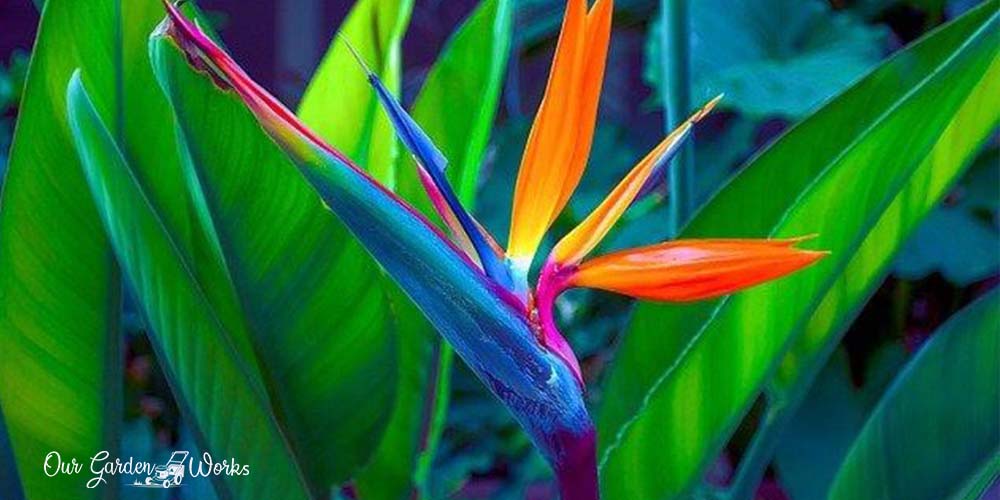Birds of paradise (BOP) plant is a luscious tropical plant that grows bird-like flowers. The splits on the leaves are normal but consider birds of paradise leaves curling as an indication of plant stress.
Healthy BOP leaves have a firm lining, stand upright, and flaunt their deep green color like a banana leaf.
Several factors cause BOP leaves to curl. These include plant stress due to too much watering or sun exposure, environmental changes, root problems, and potential pest infestation. A weak BOP, like most plants, is more vulnerable to fungal diseases and pest infestations.
In this post, we aim to help BOP growers and help them learn about the ten common reasons for birds of paradise leaves curling.
We will also include the solutions to BOP leaf problems to help you save and improve your stressed BOPs. We highly encourage you to use the elimination process when diagnosing the leaf problem of your BOP.
If your BOPs are outdoors and in direct sunlight, try to move them indoors to see any improvements. Then, consider another possible problem, which is the watering routine. Continue checking and observing your BOPs until you see the leaves perk up and come back to life.
Before we dissect the common BOP leaf problems, it is best to check the ideal conditions for your BOPs.
Ideal Growing Environment For Birds of Paradise
Strelitzia reginae, or birds of paradise, is a tropical perennial plant from South Africa popular for its bird-like flowers that come out one at a time.
The popularity of its flowers led it to become the official flower of Los Angeles city. It thrives in a warm climate and is sensitive to frost, causing the leaves and flowers to wither.
BOPs grow in two ranks, making their stem look like an aesthetic fan-like structure. It has long and broad leaves that resemble the color and texture of banana leaves. They can grow up to six feet indoors and outdoors. They need humid air to keep their leaves fresh.
Most homeowners love to care for BOPs because they are pest-resistant and easy to grow indoors. They love basking in full sun or partial shade.
However, some BOPs cultivated and grown in greenhouses may experience a plant shock when exposed to the direct sun outdoors. We will discuss this part later (under #1).
What Causes Birds of Paradise Leaves Curling Problems?
If only plants could talk, it would be easier for us gardeners to know the cause of their leaf problems. In diagnosing the problem of BOPs, you must consider several factors until you find the root cause.
To start looking for answers, here are the common causes of birds of paradise leaf curling:
#1 Too Much Sun Exposure
Isn’t it ironic to see a tropical plant outdoors experiencing curling and brown leaves? Well, there is more than what meets the eye. Birds of paradise require sunlight in the middle of a spectrum. It means that its leaves will wilt or curl when exposed to too much sunlight and too much shade.
Store-bought and nursery-grown BOPs are cultured and raised in a controlled environment inside a greenhouse. They are not accustomed to the extreme weather conditions outdoors since they have not experienced it before. BOPs may experience shock from the environmental stress, which causes their leaves to curl and burn.
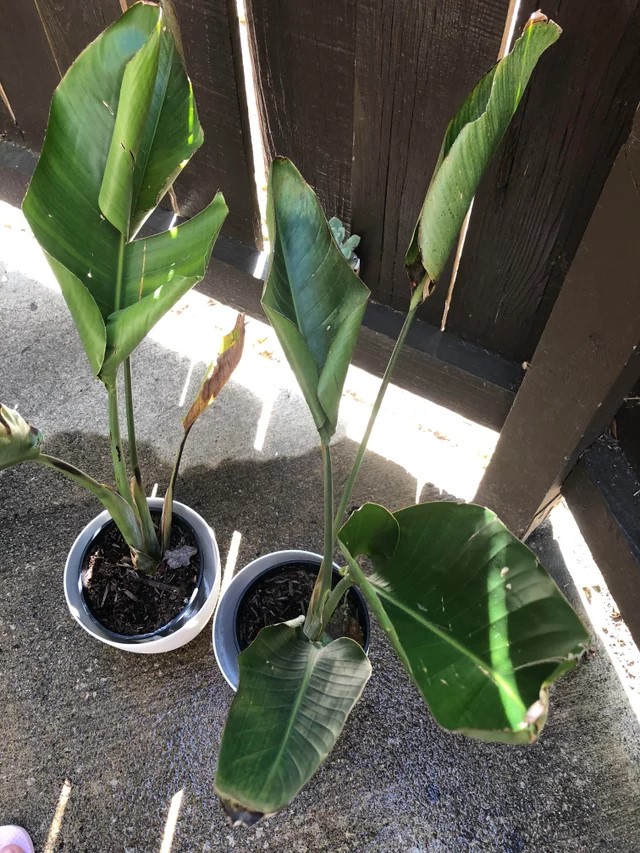
What To Do:
Move your BOP to a location where they can get plenty of indirect light to restore the curling leaves and encourage bloom production.
You may also place them in a west-facing window where they can get direct morning sunlight and partial shade in the afternoon. Observe how their health improves for the next couple of days.
#2 Underwatering
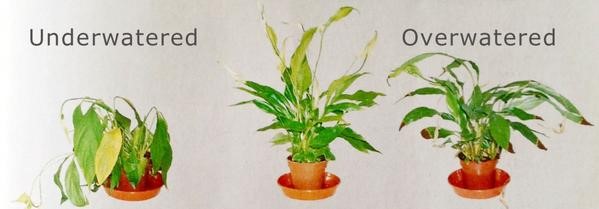
BOPs require soil that is damp but not dry. Gardeners may sometimes water them every two weeks due to possible root rot. Though it reduces their risk of overwatering, they may lack enough moisture to supply their leaves. The stems may start to look limp, and the leaves curl and turn yellow.
What To Do:
Water your BOPs on schedule and increase the frequency by making it weekly instead of every two weeks. When the top 50% of the soil has already dried, that’s the perfect time to water your BOPs.
In some cases, the lack of moisture from the soil is compensated by humid air that touches the leaves.
#3 Root Rot or Overwatering
Anything too much is not ideal for BOPs. Overwatering can also cause the leaves to curl and turn brown. In extreme cases, it can cause root rot.
When you overwater plants, the roots are soaked in water and fail to get enough nutrients from the soil. After several days, the plant becomes malnourished and shows signs on its leaves and stunted growth.
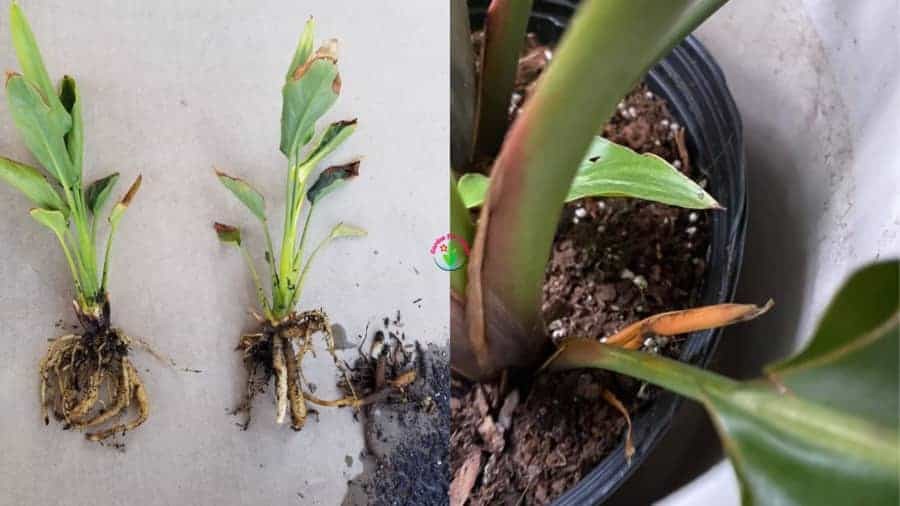
What To Do:
Allow the soil to dry out between waterings. The topsoil should be 50% dry before you water them.
You should also check the soil drainage as it might contain materials that retain water. Too much peat moss and coco coir can retain too much water in the soil, which causes the roots to drown.
Pro tip: Place small pebbles on top of the soil to prevent the stem from rotting whenever you water the plant.
#4 Chemical and Salt Buildup in The Soil
Did you know that fertilizers and tap water contain chemicals that build up in the soil?
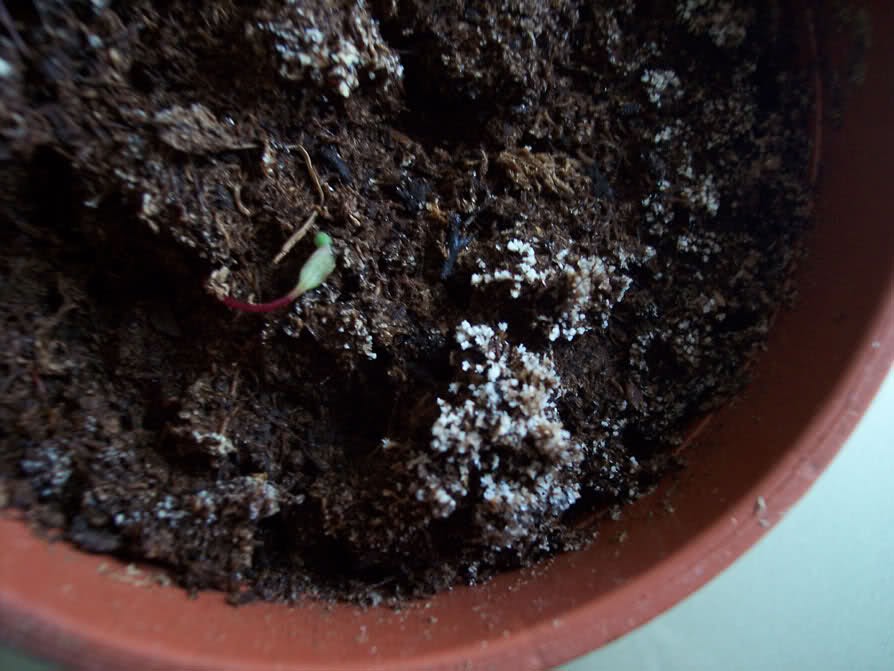
Synthetic fertilizers contain salts that eventually build up at the bottom of the soil. It makes the potting soil saltier and can even alter its pH level. Tap water sometimes contains chlorine and other chemicals that affect the soil quality.
What To Do:
According to the University of California Division of Agriculture and Natural Resources, salt buildup in the soil must be leached using running water every 6 or 12 months.
If you are using synthetic fertilizers, you must wash the potting soil after several months. You can do this by placing the pot in a sink and letting the water run from the topsoil to the drainage hole. The amount of water you should use should be twice the size of the container.
Also, let the tap water sit overnight in a container before you use it to water your plants. In some cases, gardeners use distilled water to water their BOPs.
#5 Temperature Stress
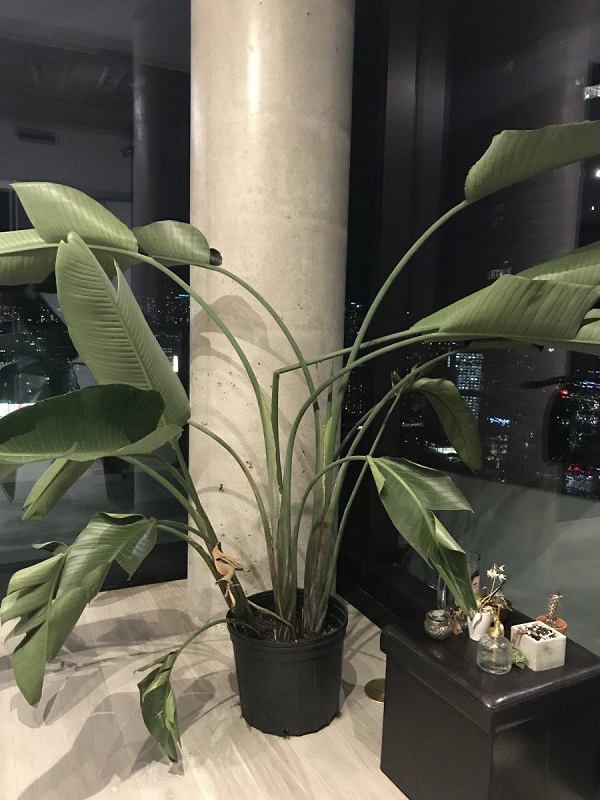
Plants have their element where they can thrive. Birds of paradise, in particular, grow well in warm climates but die in frost.
When the air becomes colder, the leaves may start to look brittle and curl. When the soil freezes and goes below 24°F, the plant may die.
What To Do:
Tropical plants like birds of paradise require a warm climate with temperatures ranging from 65°F to 70°F during the day and 55°F to 65°F at night.
During winter, place your BOPs in the warmer areas inside your house. Keep them away from cold drafts and keep the room temperature at 55°F to 70°F.
#6 Low Humidity
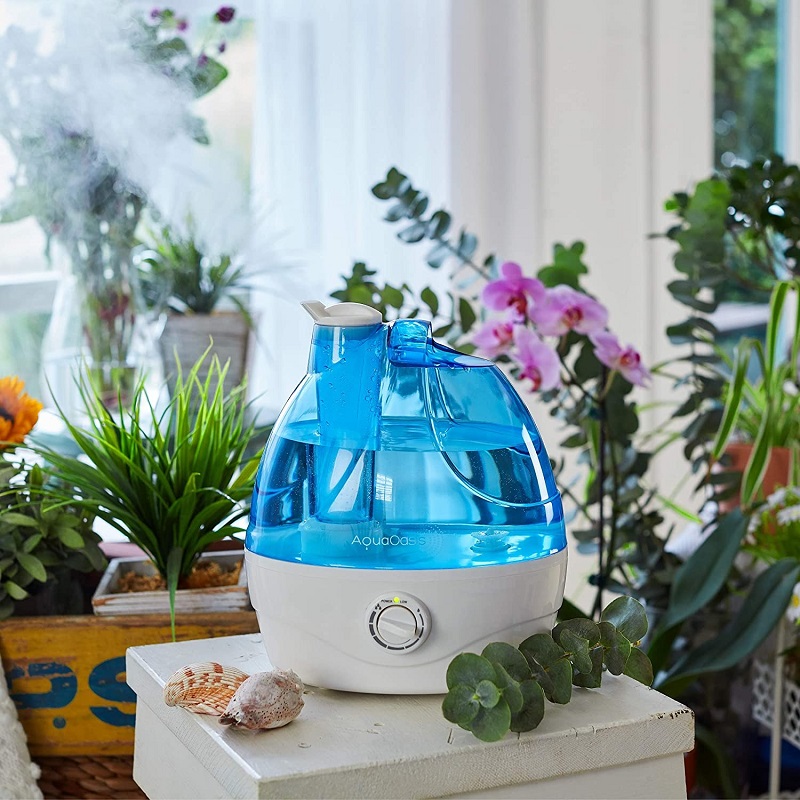
High humidity is a necessary feature for birds of paradise plants because it helps maintain their fresh and lush green leaves.
Humidity is the amount of water in the air. Cold air dries up the air humidity faster than warm air, which prevents the leaves from getting enough moisture.
In warm climates, the moisture stays in the air and increases humidity levels. In cold climates, the moisture in the air dissipates faster, causing dry air. So, the lack of humidity and cool temperature indoors will cause the leaves to curl and dry out.
What To Do:
For BOPs, the ideal humidity level is 50%. You can achieve glossy and deep green BOP leaves when you reach a 60% to 70% humidity level. You may use a hygrometer to measure the indoor humidity level.
To control the indoor humidity, you may use a humidifier or misting spray for your BOPs. Here are some of the best humidifiers for your plants:
#7 Pest Infestation
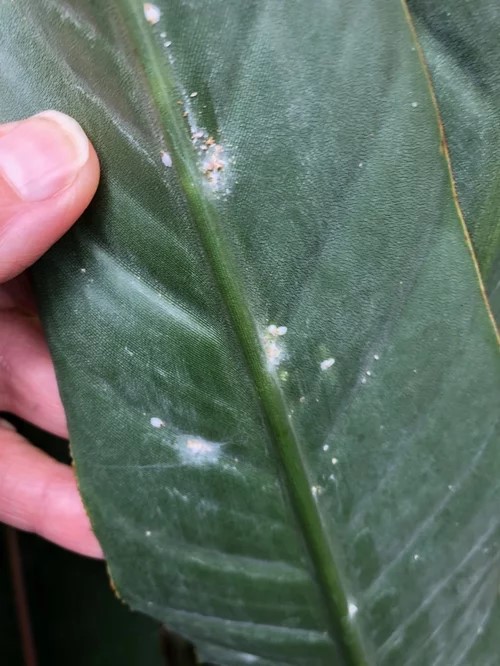
Curling is common to leaves that are infested with pests. Sap-sucking insects can dry out the leaves of BOPs, which causes them to curl and have brown edges. The common insects feasting on birds of paradise plants are:
- Scale
- Aphids
- Mealybugs
- Whiteflies
- Spider mites
The insects above thrive in warm conditions that increase their chances of finding your BOPs as a source of food. They can be harmless in small quantities but can stress your plant when its population starts to grow.
Mealybugs, in particular, are more common in BOPs. They are white cottony insects that are hard to remove on the leaf surface. They spread like wildfire and can cause unsightly damage to the leaves.
What To Do:
Wiping down the leaves every week is a good practice to keep sap-sucking insects off the leaves of BOPs. Aside from removing dust buildup, it also shines the leaves, making them look glossy.
To keep pests away from your BOP, use neem oil solution to wipe down the insects and coat the BOP leaves. Here are some ideal neem oil options you can try:
#8 Rootbound
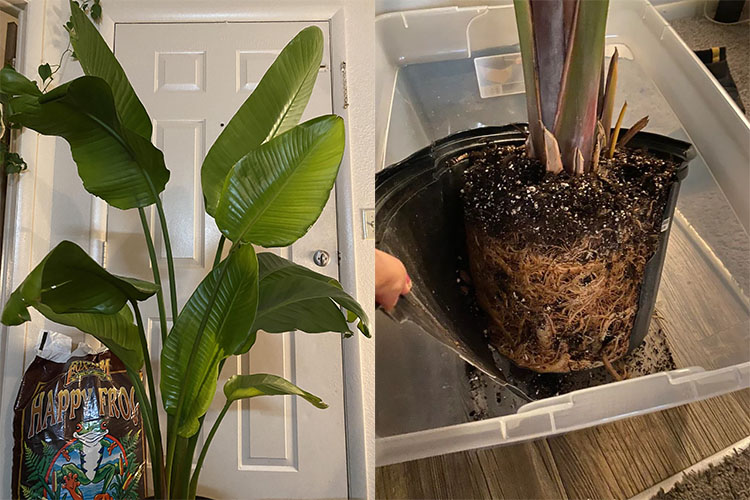
Birds of paradise grow fast. In the wild, they can spread their roots as far as they can as they grow every year. BOPs that are not re-potted for several years and have outgrown their pots become rootbound.
Rootbound is a condition where the roots of the plants are overgrown and are already choking their roots. There is not enough space for the roots to breathe and get nutrients in the soil, leading to the health decline of the plant.
What To Do:
Check the roots of your BOPs by pulling them out. Once you see long and fleshy roots, that means you need to re-pot them to a larger pot. For maintenance, you must re-pot your BOPs to a larger container every year to help them spread their roots and prevent rootbound.
#9 Under-Fertilized Soil
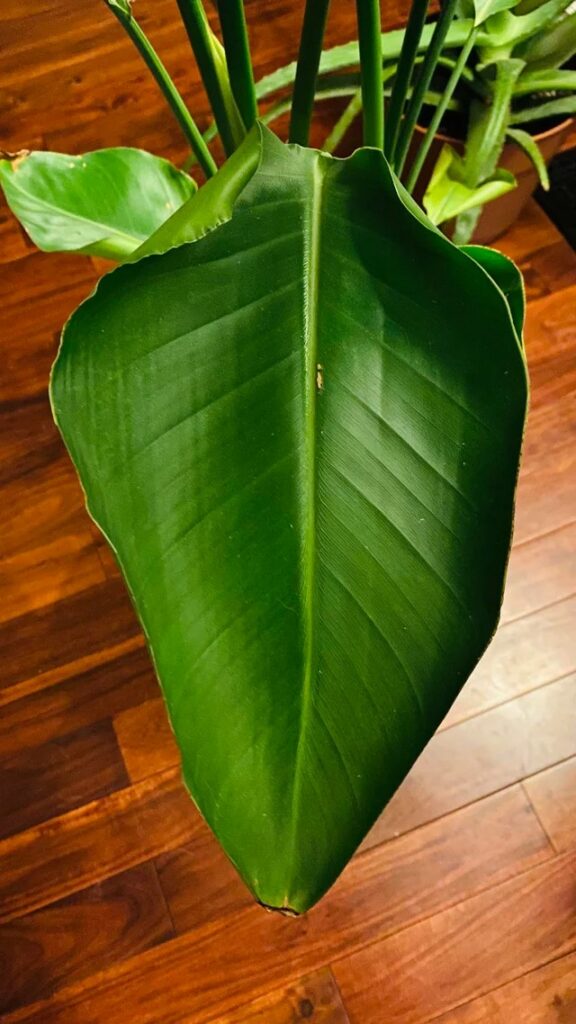
Another possible use of leaves curling in BOPs is the lack of nutrients in the soil. Healthy soil makes up a healthy plant. Birds of paradise plants are heavy feeders and require adequate plant food during the growing season.
During winter, BOPs grow slower so you also fertilize less during the cold season. Also, mature BOPs do not need fertilization since they are already established and thriving. You may feed them with compost every other month for maintenance.
What To Do:
Add a layer of compost on top of the soil of BOPs every two weeks to add nutrients to the soil. Fertilization is essential for actively growing BOPs. As they mature, you can gradually lessen the frequency of feeding them.
Here are some of the ready to use compost if you have no time to make one at home:
Also, do not fertilize too much during winter to avoid burning your plants. They grow slower and absorb fewer nutrients from the soil.
#10 Transplant Stress
The last possible indication of curling leaves in BOPs is transplanting stress or shock. Transplant stress is a normal reaction for most plants since they are still adjusting to their new environment.
BOPs may look like they are dying after transplanting. However, your BOP is trying to survive and adjust to its new home. Give them a week or two and you’ll see the leaves perk up again.
In some cases, the transplanted BOPs don’t survive because of sudden changes in temperature or pest infestation.
Final Thoughts
Birds of paradise plants are an elegant addition to your indoor plant collection. They are enormous and give life to any space or corner. We hope this post helped you identify the causes of birds of paradise leaves curling and resolve them as soon as possible.
If you experienced an unusual cause of leaf curling in BOPs, please don’t hesitate to share it in the comments section. Your experiences might help a confused BOP grower in our community.
Also, please don’t forget to share this post with your friends and spread awareness on the common leaf problems on BOPs.
